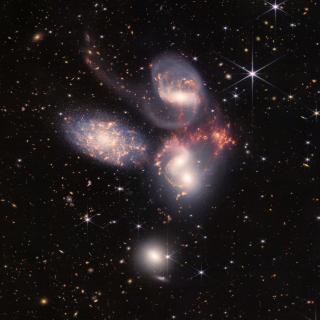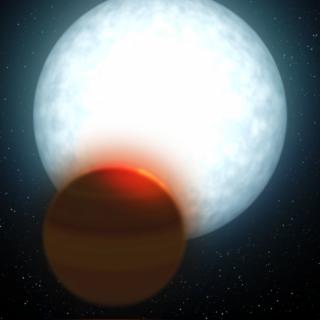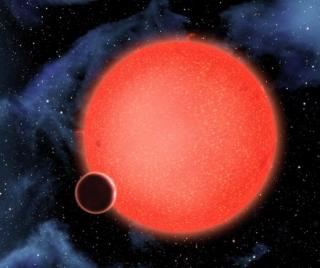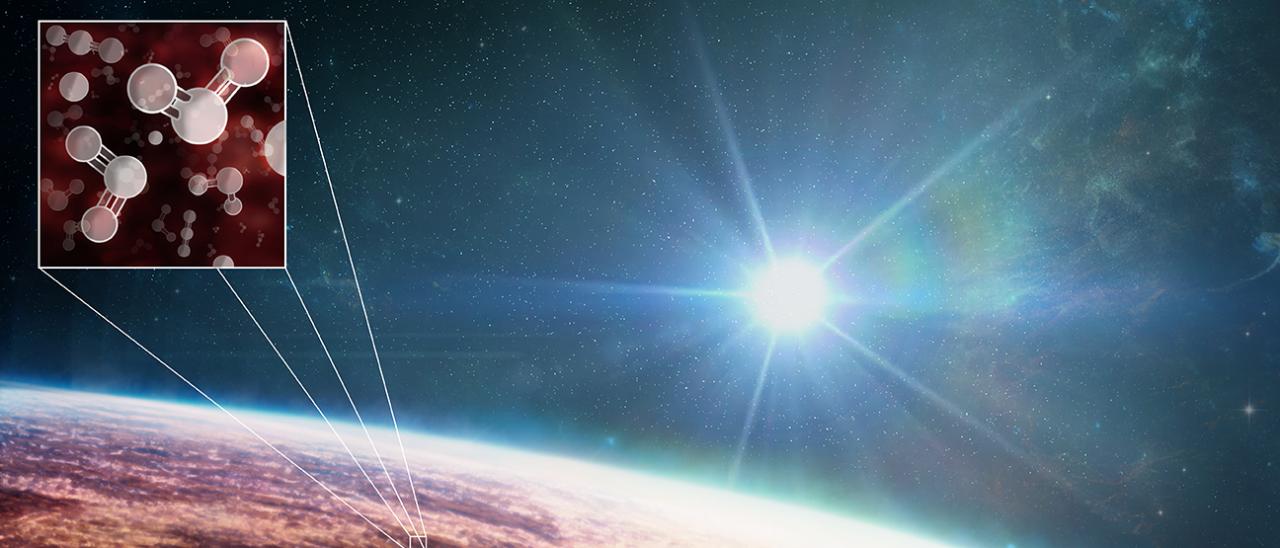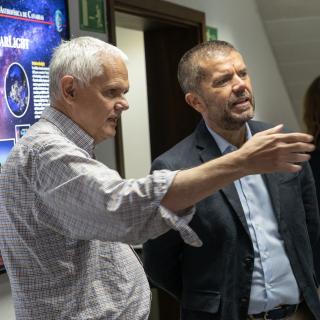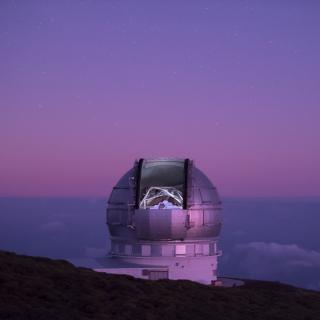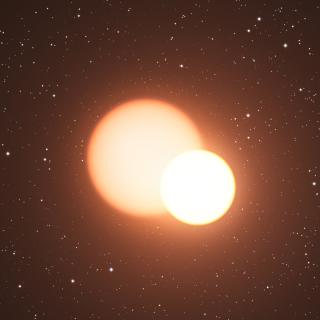New observations of WASP-39b with the JWST have provided a clearer picture of the exoplanet, showing the presence of sodium, potassium, water, carbon dioxide, carbon monoxide and sulfur dioxide in the planet's atmosphere. This artist's illustration also displays newly detected patches of clouds scattered across the planet. Credit Required: Melissa Weiss/Center for Astrophysics | Harvard & Smithsonian
NASA's space telescope has produced a molecular and chemical portrait of the atmospheric constituents of exoplanet WASP-39 b, a Saturn-sized behemoth that orbit a star some 700 light-years away. The observations provide a full menu of atoms and molecules, and even signs of active chemistry and clouds. The suit of discoveries is detailed in a set of five scientific papers produced by an international collaboration involving research staff from the Instituto de Astrofísica de Canarias (IAC).
WASP-39 b is a planet unlike any in our solar system. It is a so-called "hot Saturn" –a planet about as massive as Saturn but in an orbit tighter than Mercury-, orbiting a star some 700 light-years away. This exoplanet was one of the first examined by NASA’s James Webb Space Telescope when it began regular science operations. The results have excited the exoplanet science community.
Webb’s exquisitely sensitive instruments have provided a profile of WASP-39 b’s atmospheric constituents and identified a plethora of contents, including water, sulfur dioxide, carbon monoxide, sodium and potassium. The data also suggest the presence of clouds that may be fragmented rather than forming a single, uniform mantle over the planet.
“We observed the exoplanet with multiple instruments that, together, provide a broad swath of the infrared spectrum and a panoply of chemical fingerprints inaccessible until [this mission],” said Natalie Batalha, an astronomer at the University of California, Santa Cruz, who contributed to and helped coordinate the new research. “Data like these are a game changer.”
Among the unprecedented revelations is the first detection in an exoplanet atmosphere of sulfur dioxide (SO2), a molecule produced from chemical reactions triggered by high-energy light from the planet’s parent star. On Earth, the protective ozone layer in the upper atmosphere is created in a similar way.
“This is the first time we see concrete evidence of photochemistry – chemical reactions initiated by energetic stellar light – on exoplanets,” said Shang-Min Tsai, a researcher at the University of Oxford in the United Kingdom and lead author of the paper explaining the origin of sulfur dioxide in WASP-39 b’s atmosphere.
To see light from WASP-39 b, Webb tracked the planet as it passed in front of its star, allowing some of the star’s light to filter through the planet’s atmosphere. Different types of chemicals in the atmosphere absorb different colors of the starlight spectrum, so the colors that are missing tell astronomers which molecules are present. By viewing the universe in infrared light, Webb can pick up chemical fingerprints that can’t be detected in visible light.
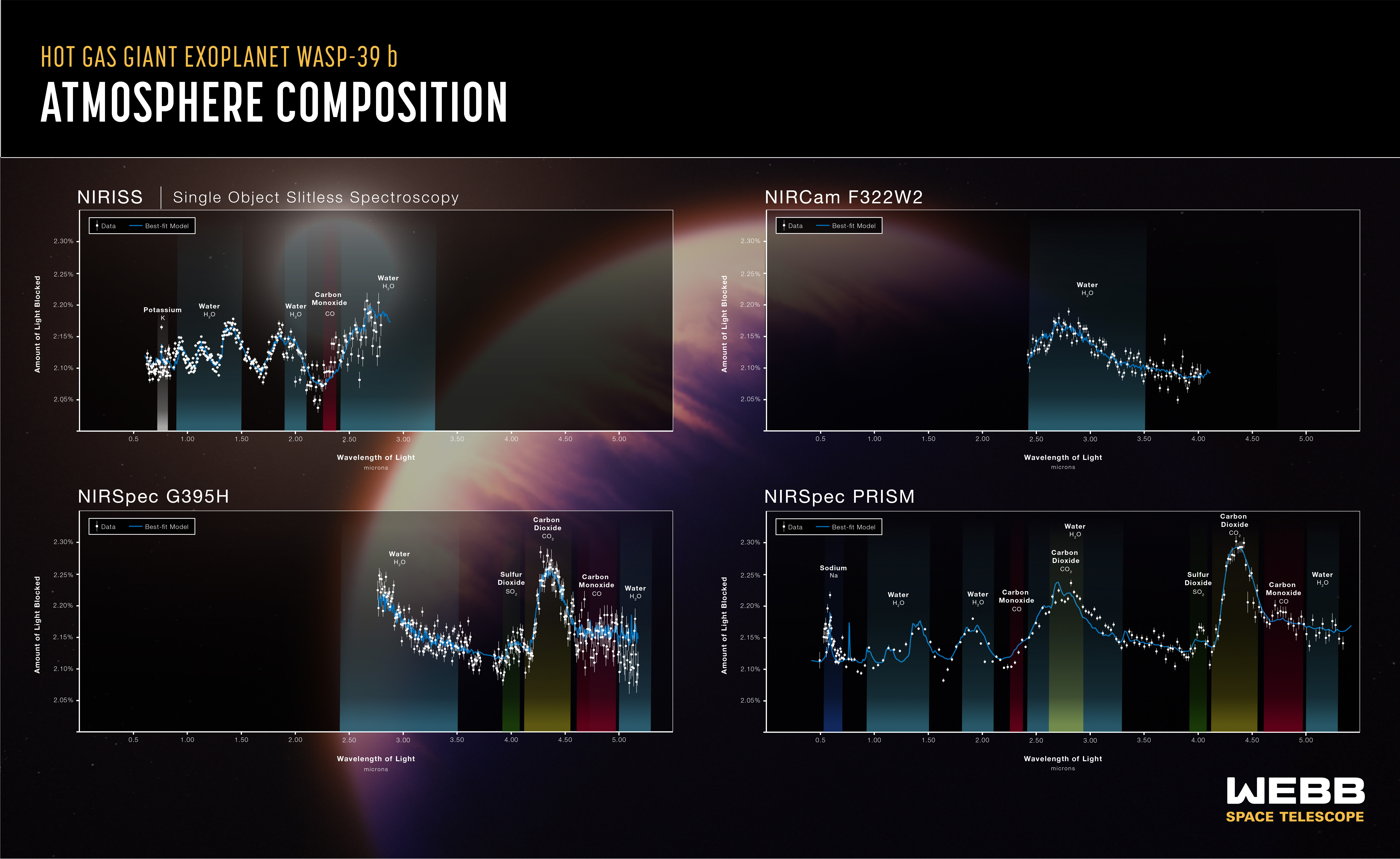
Other atmospheric constituents detected by the Webb telescope include sodium (Na), potassium (K), and water vapor (H2O), confirming previous space- and ground-based telescope observations as well as finding additional fingerprints of water, at these longer wavelengths, that haven’t been seen before. Webb also saw carbon dioxide (CO2) at higher resolution, providing twice as much data as reported from its previous observations. Meanwhile, carbon monoxide (CO) was detected, but obvious signatures of both methane (CH4) and hydrogen sulfide (H2S) were absent from the Webb data. If present, these molecules occur at very low levels.
To capture this broad spectrum of WASP-39 b’s atmosphere, an international team numbering in the hundreds independently analyzed data from four of the Webb telescope’s finely calibrated instrument modes. "We had predicted what [the telescope] would show us, but it was more precise, more diverse, and more beautiful than I actually believed it would be,” said Hannah Wakeford, an astrophysicist at the University of Bristol.
Having such a complete roster of chemical ingredients in an exoplanet atmosphere also gives scientists a glimpse of the abundance of different elements in relation to each other, such as carbon-to-oxygen or potassium-to-oxygen ratios. That, in turn, provides insight into how this planet – and perhaps others – formed out of the disk of gas and dust surrounding the parent star in its younger years. WASP-39 b’s chemical inventory suggests a history of smashups and mergers of smaller bodies called planetesimals to create an eventual goliath of a planet.
“The abundance of sulfur [relative to] hydrogen indicated that the planet presumably experienced significant accretion of planetesimals that can deliver [these ingredients] to the atmosphere,” said Kazumasa Ohno, a UC Santa Cruz exoplanet researcher who worked on Webb data. “The data also indicates that the oxygen is a lot more abundant than the carbon in the atmosphere. This potentially indicates that WASP-39 b originally formed far away from the central star.”
In so precisely parsing an exoplanet atmosphere, the Webb telescope’s instruments performed well beyond scientists’ expectations – and promise a new phase of exploration among the broad variety of exoplanets in the galaxy. "These results are a confirmation of the ability of the JWST instruments to probe the atmospheres of all types of exoplanets, including small and rocky worlds," says Enric Pallé, IAC researcher who participated in the study.
“We are going to be able to see the big picture of exoplanet atmospheres,” said Laura Flagg, a researcher at Cornell University and a member of the international team. “It is incredibly exciting to know that everything is going to be rewritten. That is one of the best parts of being a scientist.”
Webb is an international program led by NASA with its partners, ESA (European Space Agency) and CSA (Canadian Space Agency).
Articles:
Early Release Science of the exoplanet WASP-39b with JWST NIRSpec G395H (Alderson et al.)
Early Release Science of the exoplanet WASP-39b with JWST NIRSpec PRISM (Rustamkulov et al.)
Early Release Science of the exoplanet WASP-39b with JWST NIRCam (Ahrer et al.)
Early Release Science of the exoplanet WASP-39b with JWST NIRISS (Feinstein et al.)
Direct Evidence of Photochemistry in an Exoplanet Atmosphere (Tsai et al.)
Contact at the IAC:
Enric Pallé, epalle [at] iac.es (epalle[at]iac[dot]es)


